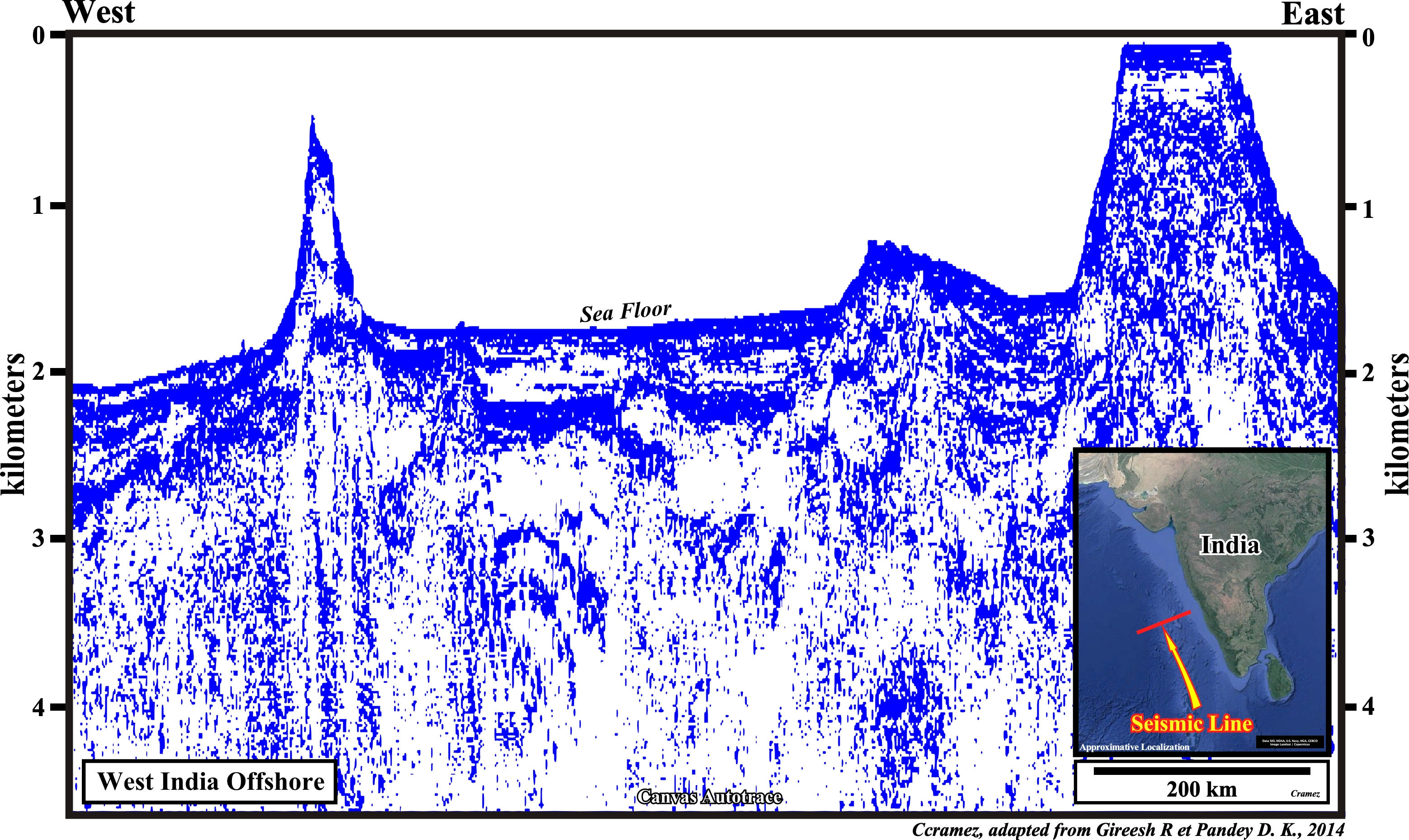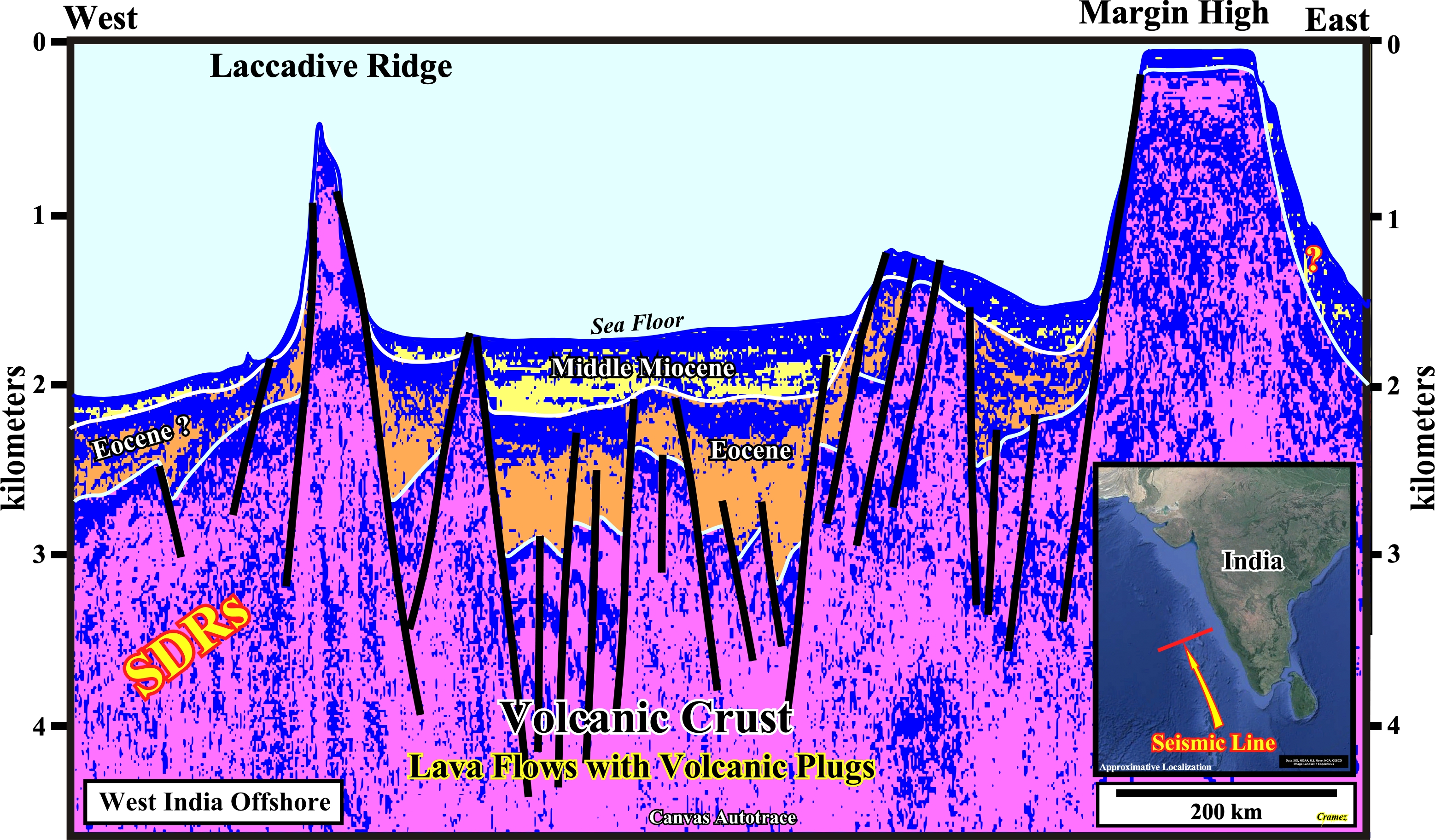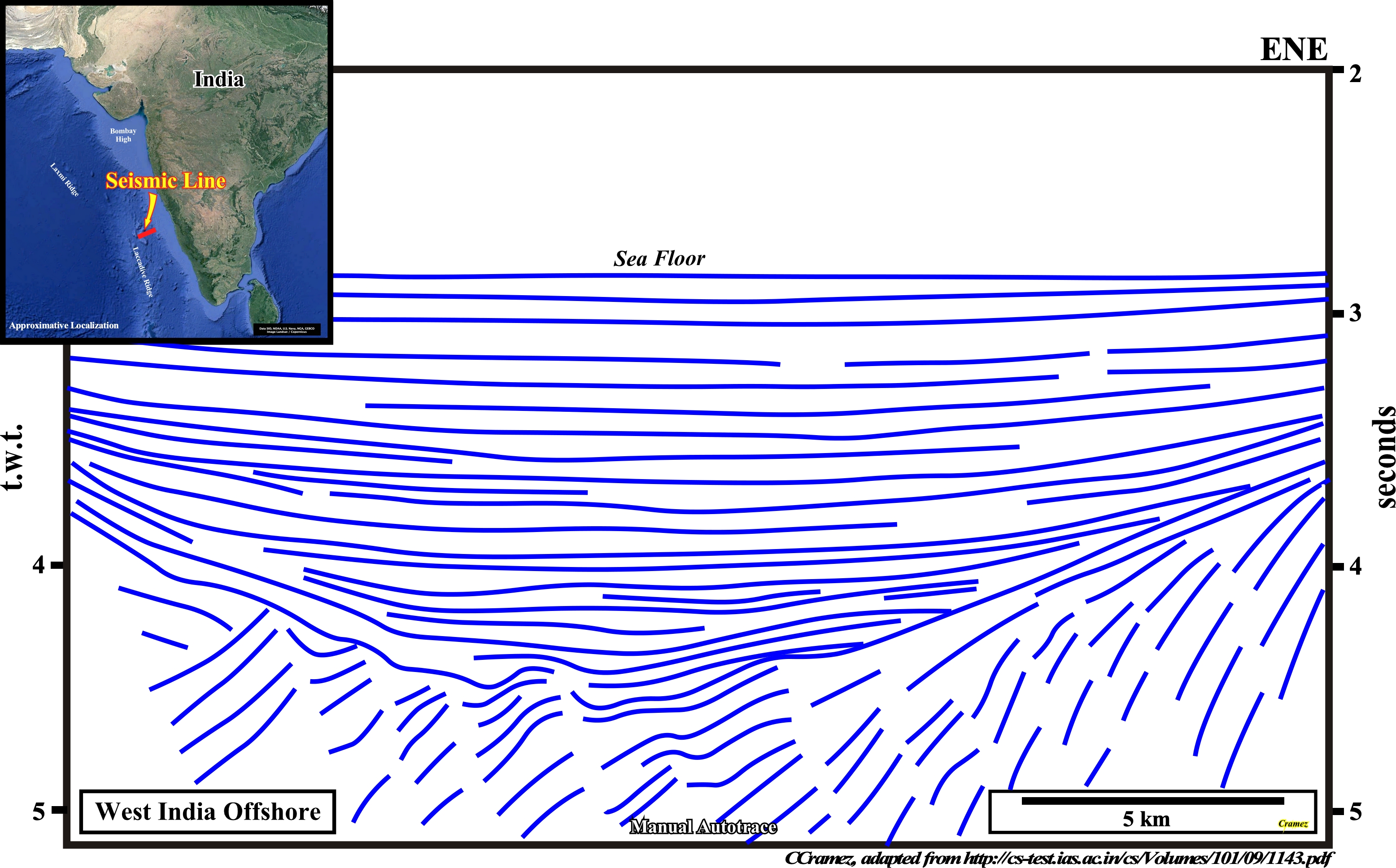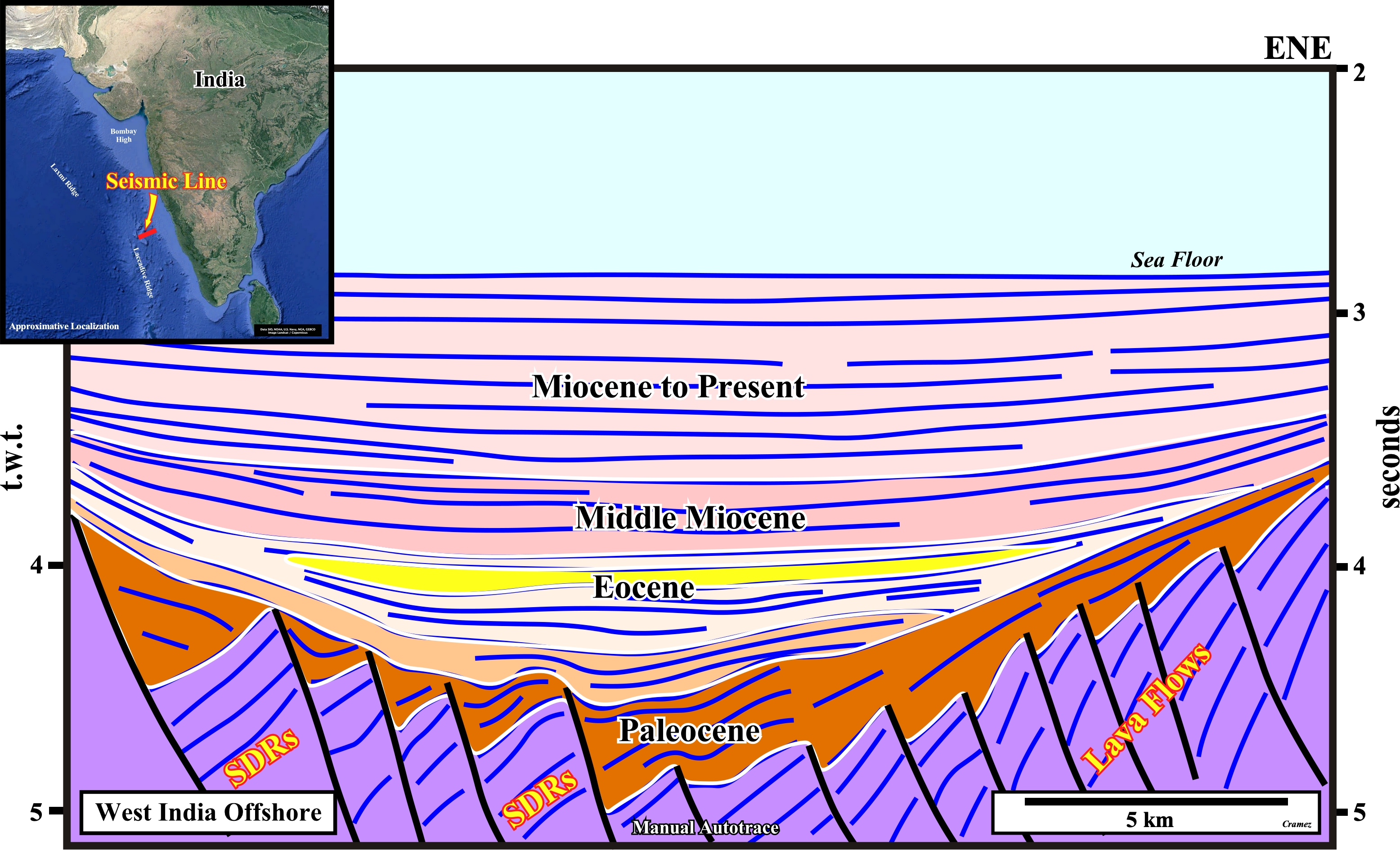

SW India Offshore
Laccadive Offshore


On this Canvas autotrace of a regional seismic line of West India offshore crossing the Laccadive ridge (also named Chagos–Laccadive Ridge (CLR), which is a prominent volcanic ridge and oceanic plateau) extending between the Northern and the Central Indian ocean) and the Margin High or Prathap ridge (westward of the Mangalore continental shelf), the substratum of the Cenozoic deep water sediments is a volcanic crust complex, in which lava flows (SDRs, see Page11A), volcanics and intrusive rocks are paramount. According several Indian geoscientists, it seems such a substratum is underlying a continental crust, with a continent-oceanic boundary located around 25 km westward of Laccadige ridge, which seems to have been formed south of or near the Equator together with the remaining western continental margin of India, when India separated first from Madagascar in the Mid-Cretaceous and then from the Seychelles Islands in the Late Cretaceous. Actually, according to N. Nair (Nish Nair et al., 2013), the Laccadive Ridge to the north of around 8.5°N, seems to be of continental origin being bounded to the south and north by the offshore extension of the Bhavani Shear and Chapporo lineament respectively. It may have separated from India along with Madagascar during Cretaceous. At the Cretaceous Tertiary boundary as Laccadive-India passed over the Reunion hotspot, the pre-existing faults on the Laccadive Ridge were re-activated and the hot-spot trace was left behind in the intermediate/shallow wavelength of the anomalies, as intrusives in the Laccadive Ridge. It formed south of or near the Equator together with the remaining western continental margin of India, when India separated first from Madagascar in the Mid-Cretaceous and then from the Seychelles Islands in the Late Cretaceous.


On this manual autotrace of a seismic line located not far from the autotrace illustrated previously, it is interesting to notice that the natural geometry of the SDRs, i.e., of the post breakup lava flows which induce, more or less, continuous reflector tilted and thickening seaward, can be quite deformed by faulting as it is the case here between the Laccadive ridge and the margin high.
Send E-mails to carlos.cramez@bluewin.ch with comments and suggestions to improve this atlas.
Copyright © 2001 CCramez
Last update:
2022